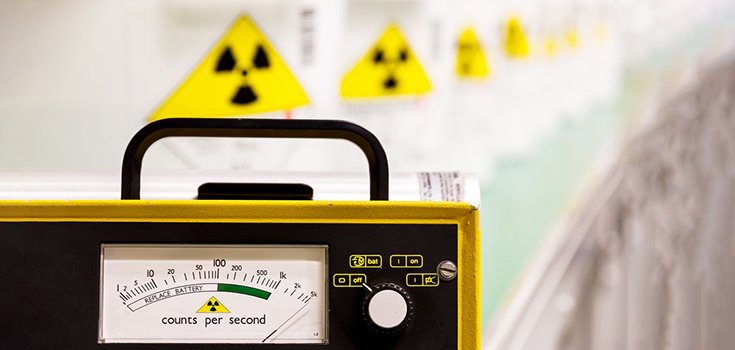“Radiation Spike” in Europe Probably NOT Caused by Russian Nuke

Between Russian aggression and ISIS hunting for weapons of mass destruction, it’s understandable that the gears of the rumor mill would start grinding upon hearing the news that a “radiation spike” has been detected across Europe.

What am I talking about? Let me explain, in case you missed it.
Last month, lesser amounts of nuclear radiation were detected over the Russia-Norway border. The Iodine-131 bloom was later detected over several European countries. [1]
The top rumor – and it is only a rumor – is that Vladimir Putin’s military carried out a secret nuke test in the Arctic. That rumor grew legs and started running wild when the U.S. Air Force sent a special WC-135 Constant Phoenix nuclear “sniffer” plane to RAF Mildenhall military base in Germany.
The aircraft is used to monitor nuke testing, and to track radioactivity. The WC-135 Constant Phoenix was deployed after the Chernobyl accident in the former Soviet Union in 1986. [2]
The Sun reported that traces of Iodine-131 were found in Norway, Finland, Poland, Czech Republic, Germany, France, and Spain in January, but the public were not immediately notified. The Sun also reports that Iodine-131 is produced by atomic bomb explosions or nuclear disasters, such as Chernobyl and Fukushima.

What they didn’t report is that Iodine-131 also has legitimate medical uses, including thyroid cancer treatment, not to mention hyperthyroidism. It is also used in diagnostic imaging.
All experts can say at this point is that Iodine-131 has a half-life of just 8 days, so detecting it in the atmosphere is proof of a recent release. In no way is anyone pointing to Russian evil-doing.
Read: Radiation- Unsafe at any Dose
Says Brian Gornall from Britain’s Society for Radiological Protection:
“The release was probably of recent origin. Further than this, it is impossible to speculate.”
Probably NOT a Nuke
It’s not shocking that people immediately latched onto the Russian nuke rumor. Earlier this month, Russia deployed a cruise missile in violation of a Cold War-era nuclear arms control treaty. The timing made perfect sense.
Plus, the radioactivity (deemed too minimal to be harmful to humans) seems to have originated from Eastern Europe. But one of the reasons experts are shying away from that conclusion is the fact that Iodine-131 was the only radioactive substance detected.
The general consensus, at least at this point, is that the radiation spike is likely the result of some sort of pharmaceutical factory leak. Astrid Liland from the Norwegian Radiation Protection Authority explains:
“Since only Iodine-131 was measured, and no other radioactive substances, we think it originates from a pharmaceutical company producing radioactive drugs.”
Scott Portzline, Security Consultant to Three Mile Island Alert, described on its website as “a non-profit citizens’ organization dedicated to the promotion of safe-energy alternatives to nuclear power and is especially critical of the Three Mile Island nuclear plant,” agrees with Liland’s assessment. Portzline, who also researches lost and stolen nuclear materials in the U.S., says he suspects a fire at a pharmaceutical facility because radioactive lead was also sampled. He tells me:
“Lead is a common shielding. During a fire, say involving a medical source of Iodine-131, some of the lead would also be dispersed. The radiation detectors which found the Iodine-131 in the air also found Lead-210.”
Portzline says a similar radiation leak occurred in Hungary in 2011.
No one knows for sure where the radiation is coming from just yet, but it only took a little bit of extra digging to discover that the true source of the plume is likely far less terrifying than an enemy nation testing humanity-ending weapons in the Arctic. Unfortunately, a Russian atomic bomb test makes for sexier headlines.
The real concern is why the public wasn’t notified. Officials claim the radiation levels detected are so low that they don’t endanger human health, but that doesn’t mean the public doesn’t have a right to know about it.
Sources:
[1] Science Alert
[2] The Sun
